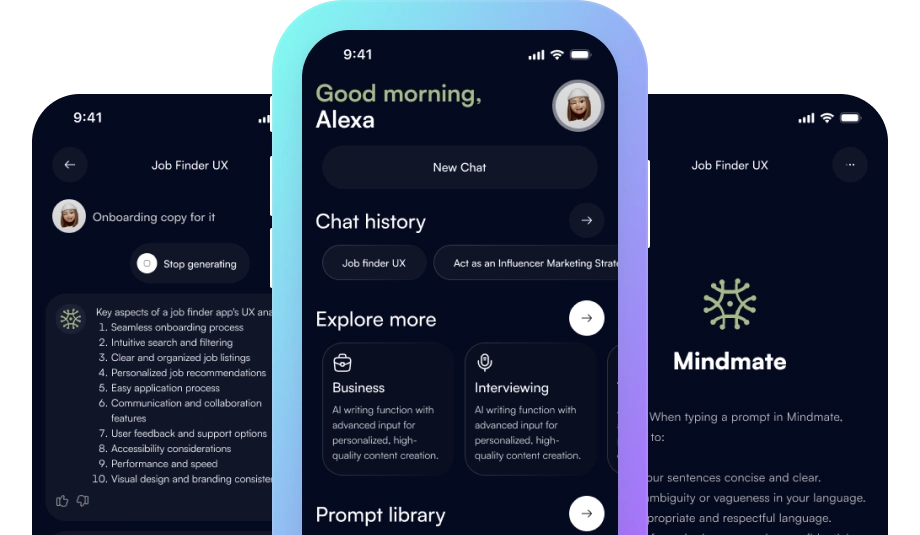The AI Abstract Generator is the perfect tool to synthesize long texts in seconds. From books to scientific articles, this tool adapts to your needs to provide you with clear and precise content.





The AI Summary Generator allows you to distill large volumes of information into accurate and easy-to-understand summaries, whether for your studies, work or simply to save time on long readings.
"Think and Grow Rich" by Napoleon Hill
It is a classic book on personal development and financial success, based on the experiences and philosophies of successful individuals. Hill studied over 500 millionaires to identify the common principles that led to their success. The book focuses on the mindset and beliefs necessary to achieve success and prosperity.
The book begins with the premise that thoughts are powerful and can be transformed into wealth if sustained with desire and focus. Hill lays out his philosophy through 13 principles, which are designed to help anyone transform their desire into tangible achievements. Some of the key principles include burning desire, faith, auto-suggestion and organized planning. Hill emphasizes the importance of perseverance and the ability to overcome temporary failures.
With these principles, Hill seeks to motivate readers to achieve both material and personal success by modifying their beliefs and actions.
Artificial intelligence (AI) is one of the most impactful technological advances of our era. From its conceptualization as a branch of computer science in the 1950s, to the revolutionary applications transforming entire industries today, AI has evolved in astonishing ways, affecting every aspect of our lives.
Artificial intelligence refers to the ability of machines to perform tasks that would normally require human intelligence, such as speech recognition, problem solving, decision making and learning. Through advanced algorithms and the use of large amounts of data, AI systems can simulate certain human cognitive processes, from reasoning to adaptation.
There are two main categories of AI:
AI was formally introduced in 1956 during the Dartmouth Conference, where visionary scientists such as John McCarthy and Marvin Minsky laid the foundations for the creation of intelligent systems. However, technological and data processing limitations slowed its development in the following decades.
With the advent ofmachine learning and deeplearning, AI experienced a renaissance in the 21st century. These advances, powered by access to massive data and more powerful hardware, enabled the development of systems such as:
AI is present in virtually every industry. Some of the most relevant applications are highlighted below:
AI has revolutionized medicine, enabling more accurate diagnoses, personalized treatments and predictive analytics. For example:
In the financial sector, AI is used to predict market trends, detect fraud and personalize customer services.
Autonomous driving is one of the most notable advances in AI, with companies such as Tesla and Waymo leading the development of intelligent vehicles. In addition, route optimization and urban traffic management are areas where AI is having a significant impact.
From streaming platforms like Netflix to video games with characters that learn from player behavior, AI transforms how we consume content and entertain ourselves.
Personalized AI systems offer adaptive learning experiences, such as platforms that identify learner strengths and weaknesses to adjust content.
Despite its achievements, artificial intelligence faces significant challenges:
The future of AI looks promising and full of possibilities:
Artificial intelligence is no longer a concept of the distant future, but a rapidly evolving reality, shaping our society and economy. Its responsible and ethical implementation will be key to maximizing its benefits while minimizing its risks. The question is not whether AI will continue to advance, but how we can adapt and collaborate with this technology to build a better future.
| Section | Summary |
|---|---|
| Artificial Intelligence | AI is a significant technological advance that impacts all aspects of modern life. |
| What is Artificial Intelligence? | AI enables machines to perform tasks that require human intelligence through algorithms and data. |
| History and Development of AI | Since its inception in 1956, AI has evolved with advances in machine and deep learning. |
| Applications of AI | AI is applied in healthcare, finance, transportation, entertainment and education, improving processes and experiences. |
| AI Challenges | They include ethical issues, data bias, privacy, and the employment impact of automation. |
| The Future of AI | Includes the development of general AI, more natural human-AI interaction, and contributions to the environment. |
Laboratory report on 10-leaf manganese complexes.
| Subject | Key terms | Description (simplified) |
|---|---|---|
| Manganese complexes | fac-[MnBr(CO)₃(κ²P,P-dppm)], mer-[MnBr(CO)₂(κ²P,P-dppm){P(OPh)₃}], Metal carbonyls, dppm. | Synthesis and characterization of manganese(I) complexes using carbonyls and phosphorus ligands; IR and NMR techniques are employed for compound identification. |
| Equipment and materials | Schlenk flask, Bubbler, Toluene, Hexane. | Use of specific equipment in inert conditions (nitrogen) to prevent adverse reactions of the synthesis reagents. |
| Safety Procedures | Toxics, Toxic Gases, Precautions, Flammability | Description of precautions and hazards associated with the reagents and chemicals used; importance of using a fume hood during reactions. |
| Characterization and reactivity | IR, NMR, Trans effect, Readability | Analysis of spectra to determine the structure of complexes; observation of signal splitting as evidence of isomers or impurities. |
| Key term | Definition |
|---|---|
| fac-[MnBr(CO)₃(κ²P,P-dppm)] | Manganese(I) complex coordinated with carbonyl ligands and diphenylphosphine, used as a starting point for the formation of other more stable complexes. |
| cis,mer-[MnBr(CO)₂(κ²P,P-dppm){P(OPh)₃}] | Manganese complex with specific structure showing enantiomers and stability due to chelating, analyzed by IR and NMR spectroscopy. |
| Metal carbonyls | Compounds containing metal-carbonyl bonds, important in coordination chemistry and synthesis of new materials with catalytic properties. |
| dppm | Bis(diphenylphosphino)methane, a bidentate ligand that can coordinate across two phosphorus atoms, providing stability to metal complexes. |
| Trans effect | Influence that a group attached to the center has on the reactivity and displacement of ligands in the trans position; important in determining the stability of complexes. |
20-page scientific paper on discourse analysis in Social Psychology
The paper explores Discourse Analysis (DA) within Social Psychology, highlighting its methodological diversity and contrasting it with more traditional approaches. It begins by noting that there is no single definition of DS, as it encompasses a wide range of theories and practices. The aim of the article is to provide a general framework of the intellectual roots of SD, how to analyze texts, and the advantages and disadvantages of its use in social research.
A comparison is drawn with Content Analysis, a more structured and quantitative approach that often ignores more subtle contextual and linguistic elements. In contrast, DL is based on Conversational Analysis, which considers language in its context of use, focusing on how speakers manage and structure interactions.
The article mentions key theoretical influences of AD, such as Oxford linguistic philosophy and ethnomethodology. Concepts such as discourse pragmatics and speech acts, which emphasize the ability of language to perform actions, are discussed.
The DP is proposed as an alternative to positivist methods in social psychology, which are often based on experimentation and measurement of variables. This approach is criticized for its lack of interpretive flexibility and its reliance on rigid structures. AD, on the other hand, encourages an active interpretation of texts, focusing on how they construct and reinforce social realities.
The paper concludes by stressing the importance of SD in the study of social relations and structures, proposing it as a critical tool for analyzing how these structures are configured and maintained through language. In addition, a bibliographical guide is offered to deepen in the practices and theories of SD.
10-page report on business strategies.
2000-word blog on personal finance.
The text is a complete guide on how to manage personal finances in 2024. It explains the importance of managing money well to avoid debt and achieve financial goals. The guide covers basic concepts of personal finance, its usefulness and provides practical tips for better money management, such as setting a budget, spending less than you earn, and the importance of financial education. It also lists common mistakes to avoid, and recommends the use of apps for financial tracking, as well as key books to delve deeper into topics. In addition, information is provided on different investment options to diversify income and ensure long-term sustainable financial well-being.
Do you have any questions?
This is an artificial intelligence-based tool that creates customized summaries of books or long texts.
You can generate abstracts of books, abstracts, academic, scientific articles, with key and concise points.
AI uses advanced natural language processing algorithms to identify the main ideas of a text.
Yes, although there are usage limits in the free version.
Yes, the tool supports multiple languages to generate summaries.
Totally. The tool uses encrypted systems to protect your data.
They are highly accurate, although you can review and edit them to make sure they meet your expectations.
Easy-task.ai has saved us thousands of euros. It's a tool that pays for itself from the first day you use it

CTO
Since I have been using the tool I have experienced a massive growth in my networks

YouTuber
This tool has made it possible for me to dedicate much more time to my family without neglecting my obligations

Copywriter
The capability of this tool is incredible. I've been able to get hours worth of tasks done in a matter of seconds

Secretary
The only thing I regret about easy-task.ai is not having started using this tool earlier. How much time wasted

Teacher
A tool that goes beyond my expectations! Since I implemented it in my work my growth has been exponential.

Influencer
This tool has become indispensable. It saves a lot of time, increases the quality of my work.

Designer
Since using easy-task.ai I can be more efficient in content and focus on the company's growth strategies.

Community M.
A tool that all teachers need. Saves time and increases the quality of classes with original resources and approaches.

Teacher
With Easy-task.ai I have discovered a way of teaching that I could not have imagined before. A brutal leap in quality.

Teacher
The workflow has improved substantially since using easy-task.ai, I now produce content 10 times faster.

Content Creator
If you are looking to save time and better organize information, the AI Summary Generator is your perfect ally. From students to professionals, this tool offers versatility and accuracy. The ability to generate summaries of books, abstracts, academic, scientific articles, with key points or concise, ensures that you will have the right solution for every occasion.
Ease of use is also key: you only need to choose the type of summary you want, upload the text and configure your preferences. In a matter of seconds, you will have a summary ready to use, share or include in your projects.
With the variants of book summary, abstract summary and scientific article summary, these generators help you improve your productivity, compress extensive information and focus on the essentials.
Become part of this digital revolution
Unlock your full potential thanks to AI and Easy-task.ai. Improve your productivity and achieve your goals.

